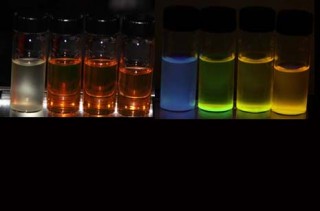Engineerblogger
Sept 23, 2011
The funds, administered by the Arkansas NASA-EPSCoR office at the University of Arkansas at Little Rock, will enhance research opportunities in the state and could create high-tech jobs. The National Science Foundation initiated EPSCoR - the Experimental Program to Stimulate Competitive Research - to encourage local action to develop long-term improvements in a state's science and engineering enterprise.
"This research will have a significantly positive impact on the quality and competitiveness of the state's academic research enterprise," said Omar Manasreh, professor of electrical engineering at the University of Arkansas. "It will create new opportunities for further development in the field of novel photovoltaic materials and devices."
The three-year grant totals slightly more than $1 million. As principal investigator, Manasreh will receive $710,646 - $473,764 from NASA and $236,882 in cost-sharing funds from the University of Arkansas. Liangmin Zhang, assistant professor at Arkansas State University, will receive $171,235 from NASA and $85,617 from ASU. UALR will receive $90,000 from NASA to cover administrative costs.
The funding will allow researchers in Manasreh's Optoelectronics Research Lab to continue growing and functionalizing semiconductor and metallic nanoparticles to be used in solar cells. He said this work could eventually lead to the start of a private company based in Arkansas. In 2010, Manasreh received a five-year $1.13 million grant from the U.S. Air Force Office of Scientific Research, which included cost sharing from the University of Arkansas, to pursue similar and complementary work.
The ultimate goal is to fabricate and test a photovoltaic device that is capable of possessing a solar energy conversion efficiency of 40 percent or better. Currently, solar panels used on NASA satellites and spacecraft use silicon-based technology, which cannot produce light-to-energy conversion efficiency greater than 23 percent.
Manasreh employs two approaches to fabricate solar cells. Instead of silicon, the first approach involves a combination of copper, indium, gallium and selenium (CuInSe2 and CuInGaSe2) as the semiconductor material to grow nanocrystals. The researchers make the nanocrystals functional by generating volatile ligands, which are molecules that bind to a central atom. The nanocrystals are then either converted into thin films or combined with titanium dioxide or zinc oxide nanotubes to create the desired solar cells. After fabrication of the cells, the researchers will test and evaluate their performance.
The second approach uses molecular beam epitaxy, a method of depositing nanocrystals, to create quantum dots made of indium arsenide (InAs). Quantum dots are nanosized particles of semiconductor material.
To enhance the performance of the solar cells, the researchers will use short ligands to couple metallic nanoparticles to the nanocrystals and quantum dots. They will then investigate the plasmonic effect of trapping sun light, which in turn increases the energy conversion efficiency. Just as a photon is the quantum of the electromagnetic waves, a plasmon is the quantum of charge waves generated by light.
Manasreh is member of the Institute for Nanoscience and Engineering at the University of Arkansas. His research has focused on experimental and theoretical optoelectronic properties of semiconductors, superlattices, nanostructures and related devices. He has worked extensively with electronic and optoelectronic applications, photovoltaic materials and devices and growth of nanomaterials. His recent work has focused on optoelectronic devices such as multi-color detectors and infrared detectors for focal plane arrays. Since joining the University of Arkansas in 2003, he has received more than $8 million in public research funding. This funding has been used to establish a state-of-the-art research lab with instrumentations ranging from nanomaterial characterization and device fabrication to device testing and evaluation.
Source: University of Arkansas

0 comments:
Post a Comment